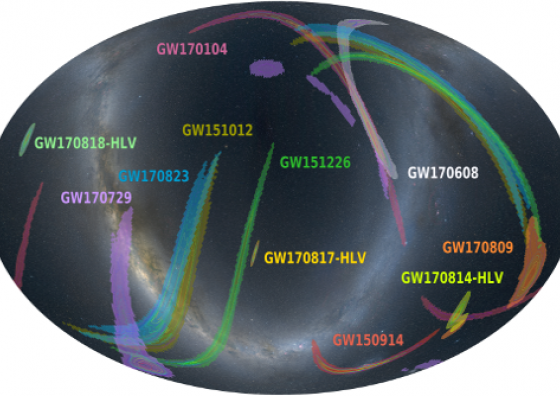The observatories are also publishing their first gravitational-wave events catalog
On Saturday 1st December 2018, scientists attending the Gravitational Wave Physics and Astronomy Workshop in College Park, Maryland, presented new results from searches for coalescing cosmic objects, such as pairs of black holes and pairs of neutron stars, by the LIGO and Virgo detectors. The LIGO and Virgo interferometers have now confidently detected gravitational waves from a total of 10 stellar-mass binary black hole mergers and one merger of neutron stars, which are the dense, spherical remains of stellar explosions. Seven of these events had been reported before, while four of the black hole detections are newly announced.
From September 12, 2015, to January 19, 2016, during the first LIGO observing run since undergoing upgrades in a program called Advanced LIGO, gravitational waves from three binary black hole mergers were detected. The second observing run, which lasted from November 30, 2016, to August 25, 2017, yielded a binary neutron star merger and seven additional binary black hole mergers, including the four new gravitational wave events being reported now. The new events are known as GW170729, GW170809, GW170818 and GW170823 based on the dates on which they were detected.
The Virgo interferometer joined the two LIGO detectors on August 1, 2017, while LIGO was in its second observing run. Although the LIGO-Virgo three-detector network was operational for only three-and-a-half weeks, five events were observed in this period. Two events detected jointly by LIGO and Virgo, GW170814 and GW170817, have already been reported.
One of the new events, GW170818, detected by the global network formed by the LIGO and Virgo observatories, was precisely pinpointed in the sky. The sky position of the binary black holes, located about 2.5 billion light-years from Earth, was identified with a precision of 39 square degrees. That makes it the next best localized gravitational-wave source after the GW170817 neutron star merger.
The figure shows the localizations of the various gravitational-wave detections in the sky. The triple detections are labelled as HLV, from the initials of the three interferometers (LIGO-Hanford, LIGO-Livingston and Virgo) that observed the signals. The reduced areas of the triple events demonstrate the capabilities of the global gravitational-wave network.
